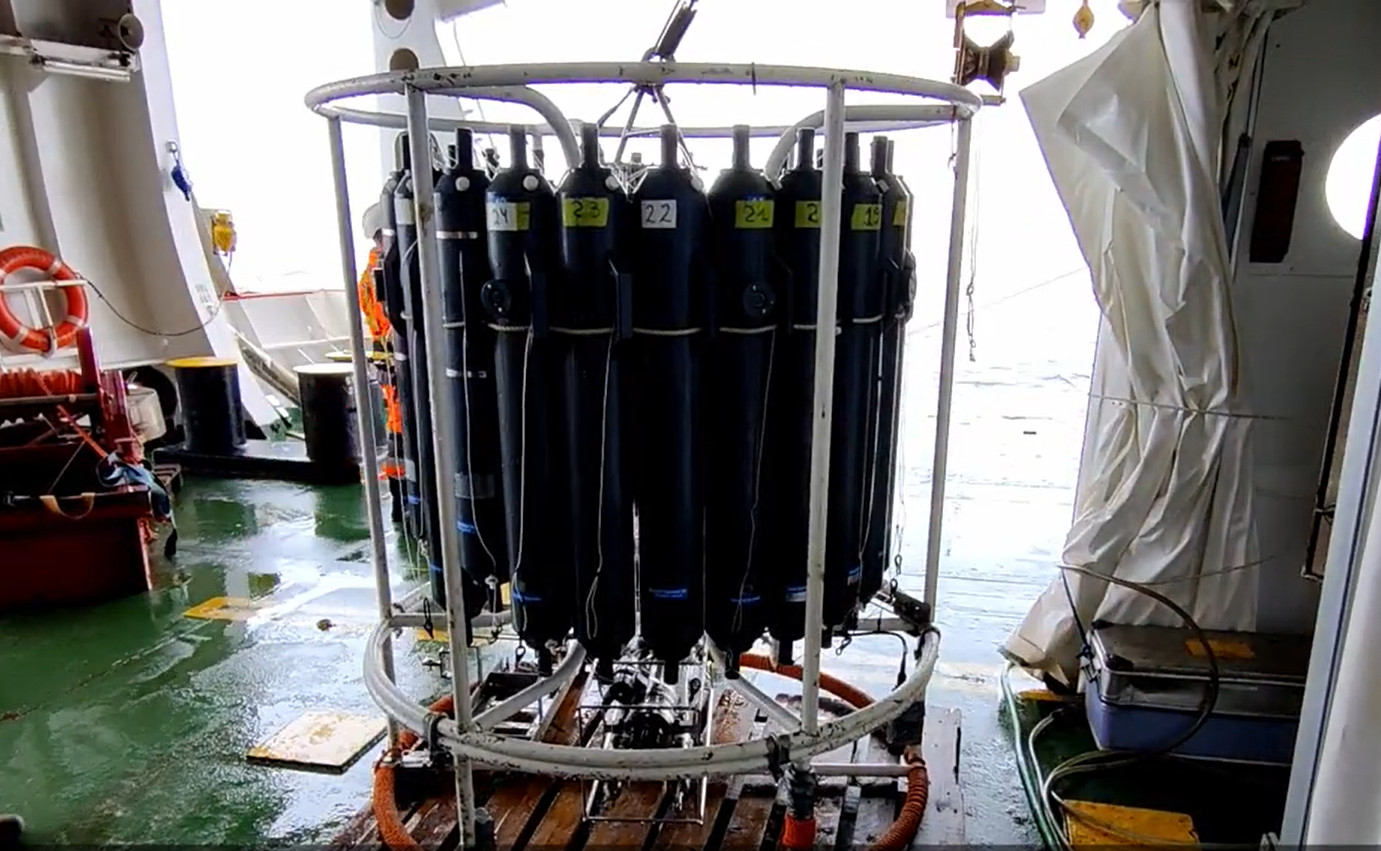asNeeded
Type of resources
Available actions
IADC Research Activities
Topics
Keywords
Contact for the resource
Provided by
Years
Formats
Representation types
Update frequencies
status
Scale
-
Snow sampling every year at the Kongsvegen glacier, in Svalbard
-

Continuous Vis-Near IR Characterization of snow-ice surface in Ny-Ålesund (SnowIceCReM) The activity foreseen for 2015-2020 includes: continuous full-range reflectance measurements; continuous multispectral observations; ground-truth survey on snow surfaces. The first part of the activity is attempted to replicate the experiment carried out in 2014 where a VNIR spectroradiometer were deployed at the CCT. Hardware upgrades will be coupled with the addition of some position and optical reference targets. An hemispheric webcam will acquire high resolution sky and ground images to support the experiment in terms of cloud and snow cover/roughness characterization, and to provide a quality check of the rotating support position by means of the above mentioned specific targets. The availability of such accessory information will help on selecting a homogeneous spectral albedo dataset. The same quality check approach will be used also for the deployment of a second instrument that will be developed in order to obtain fixed band albedo at 860, 1240 and 1640 nm. Both measurements will be hemispheric, in the 350-2500nm wavelength range. While the first set up obtains asynchronous spectral albedo, the second one provides synchronous spectral albedo on bands selected considering sensors deployed on satellites. The final task will be persecuted with a ground-truth survey focused on calibrating the two different hemispherical receivers with bidirectional observations.
-
Aerosol Optical Depth (AOD) measured by the NOrwegian Institute for Air Research (NILU) at Ny-Alesund between 2002 and 2010 by using a Precision Filter Radiometer (PFR). AOD is provided at 500 nm and alpha in the spectral range (nm) 411.9-862.5.
-

Atmospheric Gondola for Aerosol Profiles (AGAP) The scientific goals of AGAP are to develop novel aerosol payloads and evaluate the vertical distribution of aerosol properties in the Arctic Boundary Layer. Dataset consists in Aerosol vertical profiles gridded at a 50 m spatial resolution: R, T, P, RH, Aerosol size distribution, BC concentration, O3. Maximum altitudes 1500 m.
-

Time series of marine particles fluxes and its compositions (Time and spatial scale: 15-90 days, fixed depth 83 m, 17 m above bottom). Flux of total mass, TMF, (g m-2 day-1) - Organic Carbon, OC, (per cent) - Calcium carbonate,CaCO3, (per cent) - Biogenic silica, Opal, (per cent) - Lithogenic material, Litho, (per cent) - Delta 13C, d13C, (per mil)
-

Terrestrial Photography ApplicationS on Snow covEr in Svalbard (PASSES) Evolution of the fractional snow cover in the Broggerdalen area using ground-based cameras located at the Climate Change Tower. Development of a new snow product focused on the estimation of the fraction of snow cover in selected sites at different spatial resolutions. All the available data obtained from public repositories such as the digital elevation model of Svalbard, the webcam imageries in Svalbard and satellite products from Landsat, Sentinel and MODIS missions, will be integrated in order to estimate the fraction of snow cover, at different spatial resolutions, for each satellite mission, computed at different sites in Svalbard islands.
-
The dataset includes the sediment and biota sampling point in Svalbard Archipelago, along Krossfjorden and Kongsfjorden. Sediment was sampled with the grab from the MS-Teisten (Kings Bay) while amphipods were sampled from the coast with nets (Polar Circle - NPI).
-

The Italian project CASSANDRA is part of the international framework of the Synoptic Arctic Survey which seeks to collect oceanographic data in the Arctic Ocean in the two-year period 2020-2021 involving the coordination of many research vessels belonging to different nations. The aim is to determine the current state and major ongoing changes in the Arctic marine system by generating an oceanographic dataset that allows for a comprehensive characterization of Arctic hydrography and circulation, carbon uptake and ocean acidification, the distribution of possible pollutants, the functioning and productivity of organisms and ecosystems.
-

RIS: 11028 Spatial Distributions of Black Carbon and Mineral Dust in Air and Snow Surface Layers upon Svalbard Glaciers (BC-3D) Project Start: 2018-03-01 End: 2020-06-30 The scientific goals of BC-3D are to evaluate the distribution of Black Carbon and Mineral Dust in the first layers of atmosphere and surface snow over targeted Svalbard glaciers in order to identify the mechanisms of the air/snow exchanges also assisted by model predictions to provide the full 3D picture. Aerosol vertical profiles gridded at a 50 m spatial resolution: R, T, P, RH, Aerosol size distribution, BC concentration. Maximum altitudes 1500 m.
-

Monitoring of Aerosol: Short and Long range source areas related to Climate Change (MAShLoCC) During the Arctic campaign 2010, an atmospheric aerosol sampling at the Gruvebadet observatory has been carried out in order to obtain information about the formation and composition of atmospheric aerosol, transport processes toward the Arctic zone as well as local and remote source areas. Instrument : ICP-SFMS, IRMS, Orbitrap